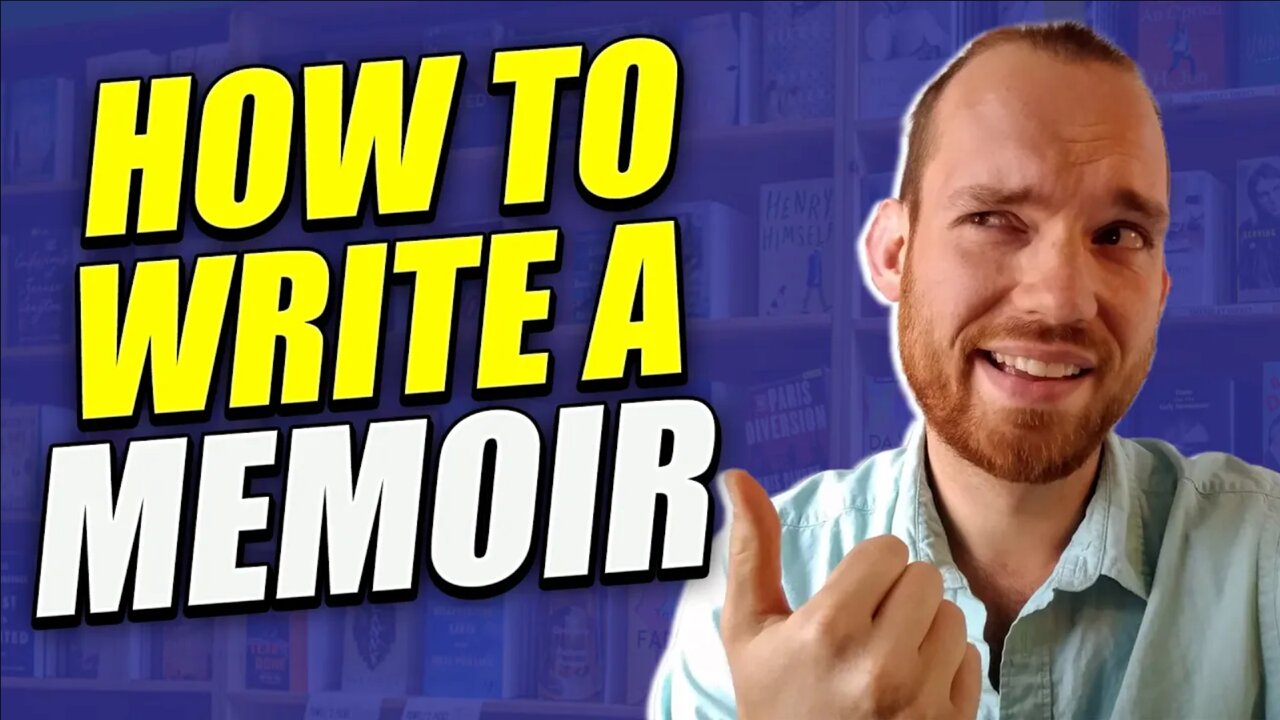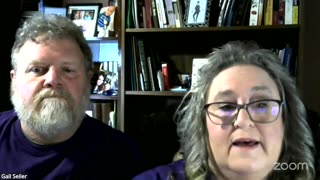Premium Only Content

How to Structure Your Memoir ft Celebrity Ghostwriter and Persuasive Writing Coach Joshua Lisec
👉 Write a useful book that converts readers into high-paying clients. Free training shows you how: https://lisecghostwriting.com/golden/ 📖
Every aspiring memoirist begins with the same question: how do you take the story of your life and make it worth reading for strangers? “How to Structure Your Memoir ft. Celebrity Ghostwriter and Persuasive Writing Coach Joshua Lisec” answers that question with uncommon clarity. In this in-depth session, bestselling ghostwriter and professional writing coach Joshua Lisec breaks down exactly how to structure your memoir so that it captivates readers, sells copies beyond your inner circle, and becomes a book with lasting impact.
Many people believe that writing a memoir means recounting life events in strict chronological order—from childhood to adulthood and everything in between. Lisec reveals why that’s one of the biggest mistakes memoir writers make. Through his experience as a memoir ghostwriter and celebrity ghostwriter, he has seen firsthand that the most memorable memoirs follow a deliberate, cinematic pattern—the same three-act story structure used in bestselling fiction and blockbuster films.
That structure transforms a memoir from a mere autobiography into a compelling narrative. By following Lisec’s method, authors can turn their most powerful memories into a story that reads like a novel while still delivering the emotional and personal truth that makes memoirs so relatable. For anyone wondering how to write memoir manuscripts that stand out, this episode is a masterclass in storytelling for real lives.
Lisec explains that the first step in how to structure your memoir is identifying which parts of your life truly belong in the story. Not every event needs to be included. Instead, the writer should focus on episodes that mark turning points, transformations, and realizations—the moments when “everything changed.” These key events form the backbone of the memoir structure, giving the reader a sense of progression, conflict, and resolution.
Drawing from his years as a bestselling ghostwriter and writing coach, Lisec teaches that an engaging memoir functions like a journey. The protagonist—you—encounters obstacles, experiences setbacks, and overcomes them through growth and insight. This is the essence of Act One, Act Two, and Act Three. Whether the story is about surviving hardship, building a career, or discovering meaning later in life, every author can adapt this proven model to their personal experience.
Throughout the discussion, Lisec emphasizes the business side of storytelling. As a memoir ghostwriter who has written more than 40 books, he understands that writing a personal story isn’t just about catharsis—it’s also about connecting with readers and building credibility. The most successful memoir books serve a dual purpose: they entertain and inspire, but they also support the author’s mission, message, or brand. A well-structured memoir can open doors to speaking engagements, consulting opportunities, and media attention.
Lisec shows why even deeply personal stories benefit from persuasive writing principles. By strategically structuring scenes and pacing revelations, a memoirist can guide the reader’s emotions and maintain engagement from the first page to the last. This combination of emotional authenticity and persuasive writing craft separates forgettable memoirs from those that move readers and make an impact.
A key insight Lisec shares is that most memoirs are not actually written as full autobiographies. Instead, they focus on a season or theme—one transformative chapter of a person’s life. This “episode approach” makes the story more readable and marketable. For example, a memoir centered on rebuilding after loss, launching a business from scratch, or finding faith in adversity can appeal to a wide audience when built around the three-act structure.
Authors often make the mistake of assuming that readers will care simply because the story is true. Lisec’s experience as a memoir ghost writer and writing coach shows the opposite: readers care because the story feels meaningful to them. That meaning is created through narrative tension, emotional stakes, and clear structure. Knowing how to write a memoir that engages readers means understanding these storytelling fundamentals.
In this detailed explanation of memoir structure, Lisec outlines the essential beats of a powerful memoir:
• Act One – Setup: Who is the protagonist? What was life like before the change? What triggered the journey?
• Act Two – Confrontation: What challenges stood in the way? What were the emotional or physical obstacles? What did the protagonist learn along the way?
• Act Three – Resolution: How did the journey end? What insight or transformation occurred? How is the author different now?
By thinking of the story this way, authors can avoid the flat, diary-like structure that plagues many memoir drafts. Instead, they can create a book that has rhythm, suspense, and emotional payoff. This is the approach Lisec uses in his ghost publishing work with clients worldwide, ensuring that every life story he shapes is not only true but truly readable.
For those searching “how to write a memoir” or “write and publish my memoir,” this episode is a roadmap. Lisec doesn’t just teach writing—he teaches positioning. He explains why memoirists should view their story as a message for others, not merely a record of their past. That shift in perspective helps aspiring authors craft memoir books that readers see themselves in, stories that feel universal even when they’re deeply personal.
As a professional ghostwriter trusted by entrepreneurs, public figures, and celebrities, Lisec brings a unique vantage point to the art of life writing. His blend of persuasive writing and narrative craftsmanship has helped clients turn deeply personal experiences into marketable books. When he guides viewers through how to structure your memoir, he’s distilling lessons from real publishing success—what works, what sells, and what truly connects.
The video also underscores a vital truth: writing a memoir doesn’t have to be a solitary process. Many aspiring authors benefit from working with a memoir ghostwriter or writing coach who can help shape their memories into a structured, engaging manuscript. Whether through developmental editing, story mapping, or complete ghostwriting, collaboration can make the difference between a book that sits unread and one that readers can’t put down.
Lisec’s step-by-step method for memoir structure is not just about writing better—it’s about thinking like an author from the very start. By combining emotional honesty with storytelling discipline, writers can craft memoirs that are both meaningful and memorable. The episode challenges viewers to view their personal stories not as random collections of memories, but as purposeful journeys with clear beginnings, conflicts, and resolutions.
Those who want to hire a ghostwriter or learn more about ghost publishing will find this episode particularly valuable. Lisec’s insights demystify the process and reveal how collaboration with a famous ghostwriter or bestselling ghostwriter can elevate a personal story to professional standards.
“How to Structure Your Memoir ft. Celebrity Ghostwriter and Persuasive Writing Coach Joshua Lisec” ultimately serves as both inspiration and instruction. It reminds writers that every life holds the seeds of a great story—but only when that story is shaped with intention, clarity, and craft. Anyone ready to write a memorable memoir that moves readers and builds their legacy will find this episode an indispensable guide to doing it right.
-
 1:31:56
1:31:56
Michael Franzese
15 hours agoWill NBA do anything about their Gambling Problems?
67.1K16 -
 57:26
57:26
X22 Report
5 hours agoMr & Mrs X - The Food Industry Is Trying To Pull A Fast One On RFK Jr (MAHA), This Will Fail - EP 14
61.5K40 -
 2:01:08
2:01:08
LFA TV
1 day agoTHE RUMBLE RUNDOWN LIVE @9AM EST
121K11 -
 1:28:14
1:28:14
On Call with Dr. Mary Talley Bowden
3 hours agoI came for my wife.
4.01K3 -
 1:06:36
1:06:36
Wendy Bell Radio
8 hours agoPet Talk With The Pet Doc
36K24 -
 30:58
30:58
SouthernbelleReacts
2 days ago $5.58 earnedWe Didn’t Expect That Ending… ‘Welcome to Derry’ S1 E1 Reaction
16.9K8 -
 13:51
13:51
True Crime | Unsolved Cases | Mysterious Stories
5 days ago $14.14 earned7 Real Life Heroes Caught on Camera (Remastered Audio)
32K9 -
 LIVE
LIVE
Total Horse Channel
14 hours ago2025 IRCHA Derby & Horse Show - November 1st
123 watching -
 4:19
4:19
PistonPop-TV
6 days ago $5.78 earnedThe 4E-FTE: Toyota’s Smallest Turbo Monster
28.8K -
 43:07
43:07
WanderingWithWine
6 days ago $3.20 earned5 Dreamy Italian Houses You Can Own Now! Homes for Sale in Italy
22.4K7